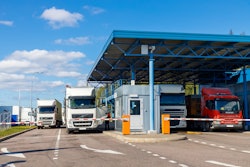
Truckstop’s latest Carrier Insight Survey reveals an optimistic and forward-thinking outlook within the trucking industry. With 91% of carriers confident in achieving their professional goals and nearly half expecting significant personal and business improvements, the survey of nearly 500 carriers underscores their readiness to navigate challenges and seize opportunities in 2025.
“The survey results highlight carriers’ resilience, ambition, and determination to enhance their businesses and overall quality of life,” says Kendra Tucker, CEO, Truckstop. “Whether focusing on fraud prevention, professional development, or securing more relevant loads, Truckstop provides innovative tools and resources to empower carriers and help them thrive in an ever-changing industry.”
Key takeaways:
- The majority of carriers (91%) feel optimistic about achieving their primary professional goals in 2025, with 54% describing themselves as “extremely optimistic.” Career stability is a cornerstone of their plans, as 97% intend to stay in trucking—63% in their current roles and 34% transitioning to new opportunities within the industry.
- Ninety-four percent (94%) believe their professional life will improve in 2025, with 53% expecting it to be “significantly better.”
- Only 3% of carriers plan to leave the trucking industry in 2025, reinforcing trucking’s role as a stable and rewarding career choice.
- 82% believe industry measures will improve, and nearly one-third expect significant advancements.
- Carriers overwhelmingly see improvement ahead with regards to cargo fraud, with 28% anticipating major gains in fraud prevention efforts.
- Over 70% plan to improve their eating habits and exercise routines in 2025, while 93% are likely to pursue additional training or certifications to advance their careers.
- In 2025, 77% of carriers plan to make rig upgrades, including performance improvements and driver comfort enhancements such as heated seats and updated sound systems.
- 45% are focused on increasing revenue; 38% aim to save for equipment upgrades; and 17% either prioritize reducing costs or building an emergency fund.




![Pros To Know 2026 [color]](https://img.sdcexec.com/mindful/acbm/workspaces/default/uploads/2025/08/prostoknow-2026-color.mduFvhpgMk.png?auto=format%2Ccompress&bg=fff&fill-color=fff&fit=fill&h=100&q=70&w=100)







![Pros To Know 2026 [color]](https://img.sdcexec.com/mindful/acbm/workspaces/default/uploads/2025/08/prostoknow-2026-color.mduFvhpgMk.png?ar=16%3A9&auto=format%2Ccompress&bg=fff&fill-color=fff&fit=fill&h=135&q=70&w=240)




